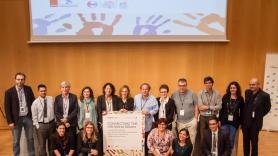1. Limitations of neurology in children
For Dr. García Cazorla, scientific leader of this B·Debate, "brain disorders in development are a very significant health problems that can affect up to 20% of all children, but historically they have been studied less than those in adults.” Xavier Castellanos, childhood psychiatrist and professor at the New York University School of Medicine, believes this could be because “children don’t vote and aren't in power, this could be why less money is invested in this type of research.”
The errors that occur in the brain during childhood lead to a wide range of possible symptoms: epilepsy, disorders on the autism spectrum, movement disorders, mental disabilities, and more. García Cazorla says, “We’ve specialized in these, but basic neuroscience is growing, and that indicates that we are a bit disoriented, because the symptoms don’t reflect the exact decision of functioning: a mutation may manifest as epilepsy in some cases but as a movement disorder in others.” Or, as Castellanos puts it, “There are mutations that cause holoprosencephaly (serious malformation of the skull and face) in some children but only cause others to be missing a tooth. There are many factors involved.”
This lack of knowledge regarding the real mechanisms behind the symptoms makes if extremely difficult to come up with truly curative treatments because the therapies address the consequences but not the cause. This is why García Cazorla advocates for "a little revolution in the way we approach, research and treat these disorders. The symptoms are important, but treatment must address the underlying mechanisms, not their consequences. And this is why we need to know what’s really going on inside the brain.” A revolution that is not free from difficulties, as it must necessarily be transversal, involving people from many different disciplines. “There is the chance that we will disconnect instead of connecting, but that’s a risk worth taking,” she says.
In order to truly understand what is happening, it is necessary to study how the brain communicates. One on hand, on the microscopic scale, in terms of synapses that connect neurons. And, on the other, on the macroscopic scale, to untangle the structure of the wiring and how it works. And, at the same time, to look towards possible solutions.



